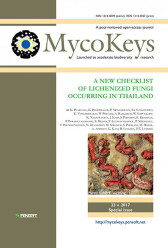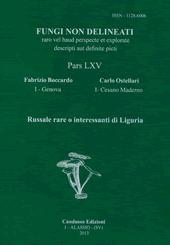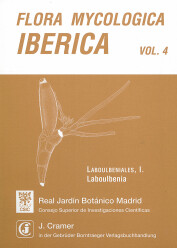Studies in Mycology No. 78 (2014)-Robert A. Samson, Cobus M. Visagie and Jos Houbraken
1 890,91 Kč vč. DPH
1 890,91 Kč bez DPH
Order Species diversity in Aspergillus, Penicillium and Talaromyces
|
Country | % VAT (books) | % VAT | |
|---|---|---|---|
| DEU | 7 | 19 | |
| HUN | 5 | 27 | |
| AUT | 10 | 20 | |
| BEL | 6 | 21 | |
| BGR | 9 | 20 | |
| DNK | 25 | 25 | |
| EST | 9 | 20 | |
| FIN | 10 | 24 | |
| FRA | 5,5 | 20 | |
| HRV | 5 | 25 | |
| IRL | 0 | 23 | |
| ITA | 4 | 22 | |
| CYP | 5 | 19 | |
| LTU | 9 | 21 | |
| LVA | 5 | 21 | |
| LUX | 3 | 16 | |
| MLT | 5 | 18 | |
| NLD | 9 | 21 | |
| POL | 5 | 23 | |
| PRT | 6 | 23 | |
| ROU | 5 | 19 | |
| GRC | 6 | 24 | |
| SVK | 10 | 20 | |
| SVN | 5 | 22 | |
| ESP | 7 | 21 | |
| SWE | 6 |
25 |
Cena platí pouze pro české zákazníky. Vzhledem k novému nařízení Evropského parlamentu musí být konečná cena od 1. července 2021 kalkulována podle země konečného určení. Platnou sazbu DPH ve vaší zemi naleznete v tabulce výše.
https://ec.europa.eu/taxation_customs
Záruka (měsíce): 24
Dostupnost: Do 14 dnů
This issue contains six articles describing the ecology, diversity, nomenclature and new taxonomic concepts of Aspergillus, Penicillium and Talaromyces.
Aspergillus section Circumdati or the Aspergillus ochraceus group, includes species with rough walled stipes, biseriate conidial heads, yellow to ochre conidia and sclerotia that do not turn black. A polyphasic approach was applied using morphological characters, extrolite data and partial calmodulin, β-tubulin and ITS sequences to examine the evolutionary relationships within this section. Based on this approach the section Circumdati is revised and 27 species are accepted, introducing seven new species. 13 species of section Circumdati produce large amounts of ochratoxin A while seven additional species produce ochratoxin A inconsistently and/or in trace amounts: The most important species regarding potential ochratoxin A contamination in agricultural products are A. ochraceus, A. steynii and A. westerdijkiae.
In the second article, analyses of dust samples collected from nine countries were made using the culture-dependent dilution-to-extinction method. Of the 7904 isolates obtained, 2717 isolates were identified as belonging to Aspergillus, Penicillium and Talaromyces. Isolates represented 59 Aspergillus species, including eight undescribed species, 49 Penicillium species with seven undescribed species and 18 Talaromyces species with three new taxa.
In the next two articles the phylogeny and new single nomenclature of Aspergillus and Penicillium are discussed. Aspergillus was traditionally associated with nine teleomorph genera, but phylogenetic data suggest that together with genera such as Polypaecilum, Phialosimplex, Dichotomomyces and Cristaspora, Aspergillus forms a monophyletic clade closely related to Penicillium. Changes in the International Code of Nomenclature for algae, fungi and plants resulted in the move to one name per species, meaning that a decision had to be made whether to keep Aspergillus as one big genus or to split it into several smaller genera. In a vote, the International Commisions of Penicillium and Aspergillus chose to keep Aspergillus. The aim of this paper was to introduce new combinations for accepted species presently lacking an Aspergillus name and provide an updated accepted species list for the genus, now containing 339 species. In addition, a standard working technique for the identification of Aspergillus and Penicillium is recommended. For Aspergillus calmodulin is proposed as a secondary identification marker, while for Penicillium β-tubulin is proposed. Penicillium currently contains 354 accepted species, including new combinations for Aspergillus crystallinus, A. malodoratus and A. paradoxus, which belong to Penicillium section Paradoxa. Both papers contain a detailed list of the accepted species together with corresponding MycoBank number, living ex-type strains and provide GenBank accession numbers to ITS, β-tubulin, calmodulin and RPB2 sequences.
In the fifth paper, a new monograph on Talaromyces applying a polyphasic species concept, including morphological, molecular and physiological characters is presented. Based on an ITS, β-tubulin and RPB2 multigene phylogeny, a new sectional classification for the genus is proposed, placing the 88 accepted species into seven sections, named sections Bacillispori, Helici, Islandici, Purpurei, Subinflati, Talaromyces and Trachyspermi. All accepted species are illustrated and described in detail, as well as notes provided on their identification using morphology and DNA sequences. For molecular identification, β-tubulin is proposed as a secondary molecular marker.
Species belonging to Penicillium section Aspergilloides have a world-wide distribution with P. glabrum, P. spinulosum and P. thomii beingthe most well-known species of this section. In the present study, 349 strains belonging to section Aspergilloides were subjected to multilocus molecular phylogenetic analyses using partial β-tubulin, calmodulin and RNA polymerase II second largest subunit (RPB2) sequences. Section Aspergilloides is subdivided into 12 clades and 51 species. Twenty-five species are described here as new. The most important characters to distinguish these species were colony sizes on agar media, growth on CYA at 30 °C, ornamentation and shape of conidia, sclerotium production and stipe roughness.
451 pp., fully illustrated with colour pictures (A4 format), paperback, 2014
 čeština
čeština




